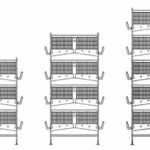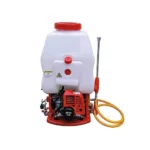It is no secret that raising pullets to point-of-lay is a challenging yet rewarding venture. But with guidance, you can ensure your birds are healthy and productive! Hence, this excerpt from our November webinar series on the tips for raising pullets is a must-read for every farmer looking to succeed in layer production. From selecting quality breeds and caring for them during their growing stage to knowing when they are ready to lay eggs, following this step-by-step process will help you as a poultry farmer to understand the necessary equipment, nutrition, housing, health challenges, and other aspects of raising a healthy flock of young pullets.
Meet the Training Facilitator – Adeoluwa Amoo
Adeoluwa Amoo is a graduate of Animal nutrition and biotechnology. From the prestigious Ladoke Akintola University, Ogbomosho. He is an expert in livestock farming, having worked as a farm manager and supervisor, and kept his own personal poultry and fish farm. He is currently the Livestock Fulfillment Officer at Afrimash Company Limited.
At the November webinar series, Adeoluwa discussed the 3 essential tips in raising pullets from day old till the point of lay.
Pullets Development For Optimum Production
Young layers from day-old till the point of laying are called pullets. The rearing of the young pullets is a crucial phase on a layer farm. Optimal management of chicks and pullets ensures optimal egg production and a healthy and productive layer flock.
The overall aim of pullet development is to reach a target body weight with high uniformity. Less than 85% uniformity will cause a decrease in egg production and peak production will be hard to maintain as they will reach their peak production at different periods but with the uniformity in weight, they will attain peak at the same time.
We need proper knowledge of the following to attain success in Layers production:
- Developmental stages; this will help to know when to switch from one stage to another such as during brooding, Vaccination, medications, Nutrition, placing them in the cage, and time to dispose of.
- Maintaining brooder temperature
- Proper spacing; which includes proper placing of feeders and drinkers at each stage
- Adequate Nutrition (this is very important as we need to know when to switch between chicks, growers, and Layers mash.
Understanding the different stages of development will help pinpoint when your hen had issues in her early life. Interrupted growth during any of these developmental phases will result in hens lacking the body reserves and organ function to sustain high production as adult layers.
Important Tips for Good Layer Production
Here are 3 important, but not limited to, tips to ensure the production of a good layer:
Bodyweight
Management and nutrition of young pullets should be aimed at reaching an optimal body weight. The optimal body weight depends on the type of laying hen and can be found in the key figures of the breed (remember humans reach the reproduction stage differently too, some start menstruation as early as 8 years while some don’t begin till about 14-15 years).
But the optimal body weight for laying mainly falls between 1.35 and 1.65 kg and at most 1.8 and 1.9kg at the start of egg production.
So it is advised to adjust nutritional management in order to reach target body weights at
6 (0.46g), 12 (1.08g), 18 (1.52g), 24 (1.84g), and 30 (1.9g) weeks of age
During these weeks of age, the birds should be weighed and the body weight should be compared to the standard body weight of the breed. If the body weight does not fit the standard, adjustments to the diet are needed.
We can ask them at the hatchery for the standard body weight of their breeds so we can tailor their diets to attain that expected body weight
Nutrition
Pullets are fed with chicks mash for the first 7 weeks of their life while they are then switched to growers mash with which they are fed until they are 18 weeks of age or until about 10% production before they are then switched to Layers mash.
Expected feed intake per day /cumulative feed per week;
WK 1- 14.5g/0.1kg
WK 2- 19g/0.2kg
WK 3- 24g/0.4kg
WK 4- 28g/0.6kg
WK 5- 35g/0.8kg
Wk 6- 39g/1.1kg
WK 7- 42g/1.4kg
WK 8- 47g/1.7kg
WK 9- 56g/2.1kg
WK 10- 58g/2.5kg
Wk 11- 60g/2.9kg
WK 12- 64g/3.4kg
WK 13- 69g/3.9kg
WK 14- 72g/4.4kg
Wk 15- 74g/4.9kg
WK 16- 77g/5.4kg
WK 17- 80g/6.0kg
WK 18- 85g/6.6kg
WK 19- 88g/7.1kg
It is important to ensure the birds get an adequate quantity and nutritious diet as their productivity depends on this. Until they attain the expected weight gain, the birds might fail to produce, and if proper nutrition is not given to them while laying, there might be a decline and eventual stop to their production.
Medication/Vaccination:
Poultry Vaccination is the first line of action in preventing poultry diseases, especially in Nigeria where highly pathogenic poultry diseases are prevalent. This is because some environmental factors like temperature and farmers’ practices influence the distribution of these pathogens. Therefore it is pertinent you make use of a poultry vaccination schedule that suits your country/region.
In Nigeria however, most farmers in rural areas don’t vaccinate their birds, the few who do, don’t follow standard vaccination procedures, and such practices could lead to vaccine failure as well as creating a breeding ground for endemic poultry diseases such as Newcastle disease, coccidiosis, Infectious bursal disease (IBD), Marek, Salmonella, etc.
Note: Vaccination is incomplete without proper biosecurity measures; I can confidently say that no farmer can get the best protection by implementing only one of these practices and likewise when birds are always on medications due to infections that could have been prevented with proper Biosecurity measures, their immune system becomes poor and likewise residues of these drugs are transferred to human via the egg they produce.
Questions & Answers
Question: How can one maintain stable production, especially now that production has dropped?
Answer: The first thing is to know why the production dropped, that is why I said it is very important that during their developmental stage, we take care of them and watch after them. Then we can go back to maybe their vaccination was not complete or maybe there is a change in feed, also their water intake and are they active. What are the things you could notice in their feces? These are the things one needs to look into.
Question: When to administer fowl cholera and typhoid vaccines or is it not compulsory?
Answer: If they don’t have fowl cholera or typhoid then you don’t need to administer those drugs to them. One thing that is important in bed production is that as a farmer that one needs to be proactive and attentive, you need to watch your beds. You need to notice changes in them. So once you notice they have cholera or typhoid, then you can administer the drugs to them, but if they don’t have any of these diseases, there is no point administering any of the drugs.













